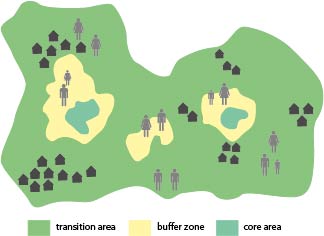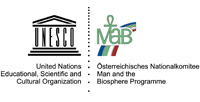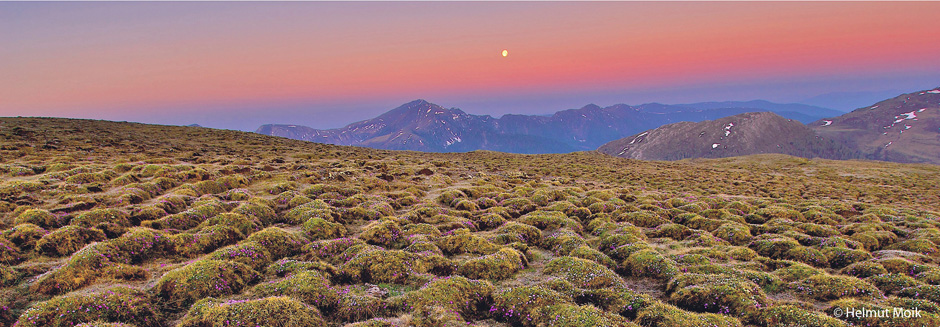BRs are ecosystems, recognized on the basis of uniform, internationally agreed criteria, where models of sustainable use of the biosphere are being developed, tested and implemented. As so-called “Learning sites for sustainable development”, they serve not only to protect and maintain certain ecosystems, but also to carry out ecologic research, environmentally aware land use and education for sustainable development.

Unlike national parks, biosphere reserves do not only protect untouched nature, but focus on inhabited cultural landscapes, often shaped over centuries by their population.
The expectations of what biosphere reserves should deliver are manifold and very ambitious. Based on their three main functions, BRs should preserve biological diversity, protect natural resources (protective function) and promote regional development towards a model region for sustainable action (development function). At the same time, they should also serve as nationally and internationally liked sites of research and education (logistic function). In addition, biosphere reserves should strengthen public awareness and increase responsibility for the impact of human activities. At the same time, however, they should also implement the abstract principle of sustainability in practice – with innovative solutions and the involvement of as many partners from the region as possible – including local communities.
In order to fulfil these functions, biosphere reserves are divided into three zones with different priorities for the implementation of the biosphere reserve objectives: core area, buffer zone, and transition area.
Please note: UNESCO has defined “biosphere reserve” as the official term for such regions. In view of the fact that many people regard a reserve as a protection area which excludes people, the term has been translated into Austrian German as “biosphere park”.




